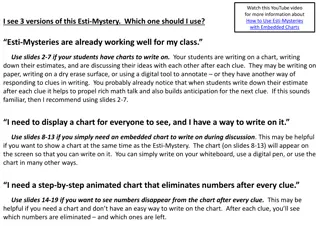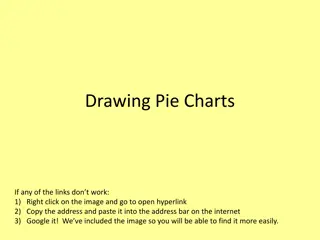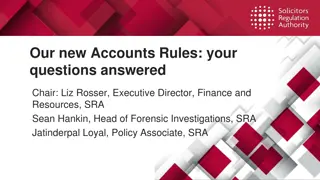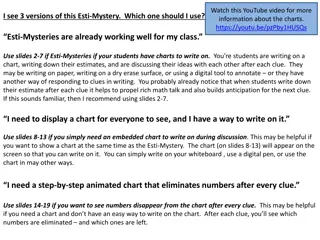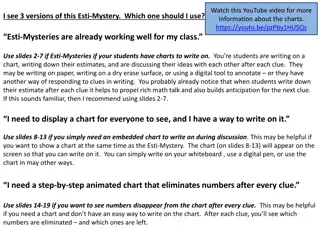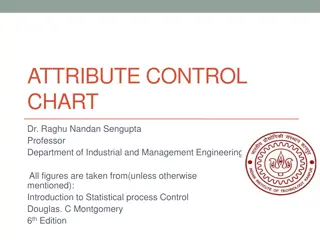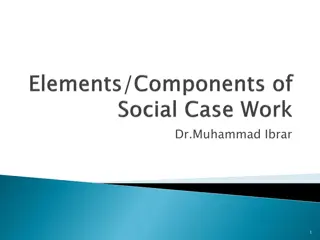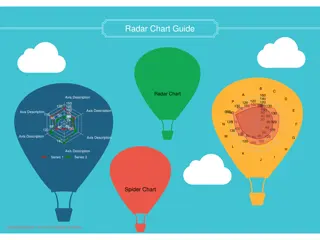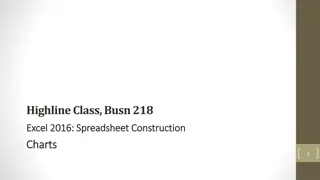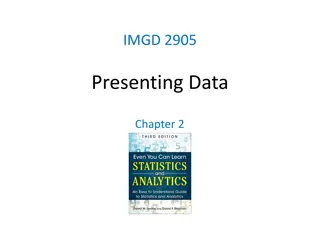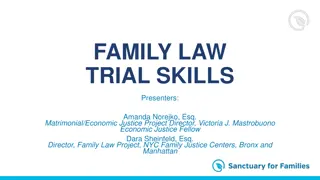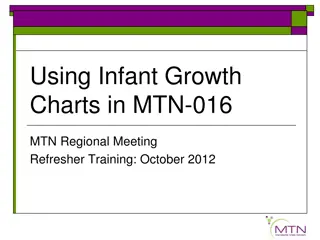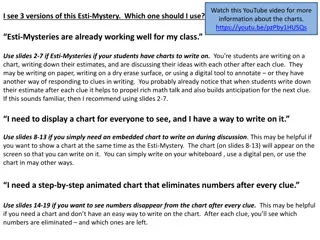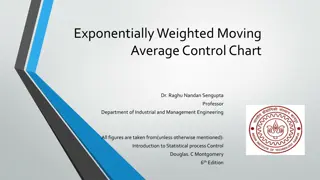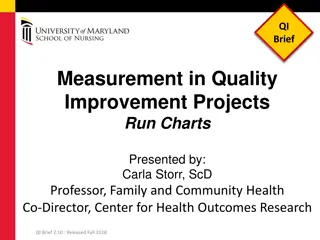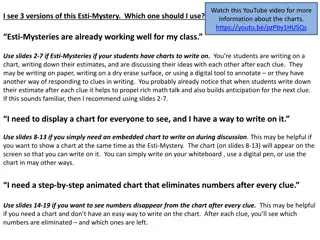Effective Documentation of Evidence-Based Practices in Client Charts
Proper documentation in client charts is vital for tracking treatment progress and ensuring quality care. The Golden Thread method helps connect assessment, diagnosis, treatment plans, and progress notes, creating a cohesive treatment story. Progress notes should detail session topics, client progress, attendance, and the use of evidence-based practices. Linking treatment plans to progress notes is essential for continuity of care.
Download Presentation

Please find below an Image/Link to download the presentation.
The content on the website is provided AS IS for your information and personal use only. It may not be sold, licensed, or shared on other websites without obtaining consent from the author. Download presentation by click this link. If you encounter any issues during the download, it is possible that the publisher has removed the file from their server.
E N D
Presentation Transcript
Documenting the use of EBPs in client charts Nicole Ibarra, MFT, Managing Director Chris Kernes, MFT, Clinical Director
The Golden Thread Here s an example of how you can follow the Golden Thread Assessment Assessment Example: During Jane s assessment, she disclosed a history of using alcohol regularly to intoxication along with a history of trauma. Diagnosis Diagnosis Example: Jane was diagnosed with Alcohol Dependence and PTSD. Treatment Plan Example: One of Jane s treatment plan goals is to: Develop some coping skills to help her deal with her PTSD symptoms rather than drinking. Treatment Plan Progress Note Example: Jane attended Coping Skills group today to work on her treatment plan goal of building more coping skills to help her deal with her PTSD symptoms. Jane worked on identifying some of her personal triggers. She also shared that she really wants to learn about what she can do to help herself feel better rather than drinking. The Golden Thread is the connection between the various parts of treatment that you describe in your documentation. Your documentation should tell the story of each client s unique treatment episode with the thread of connection woven through the story. Progress Notes The thread of documentation establishes a written, legal record of the course of treatment. It provides the information needed for both guiding the treatment process and for billing purposes.
Documenting your one-to-one focusing on goals Progress notes tell a client s treatment story and give the clinician credit for the incredible work that happens in a treatment setting. All Progress Notes must include: 1. The topic of the session 2. A description of the client s progress on treatment plan challenges, goals, action steps, objectives and/or referrals 3. Information on the client s attendance 4. Information on EBP s that you used with client
Things to Include in the Note Direct quotes from the client Client s affect, mood, overall presentation Observations regarding motivation Report on symptoms and or symptom relief Action items Agreements Evidenced-Based Practices Used Coping skills discussed Homework 4
How to Properly Link TX Plan to Progress Note Do s Don ts Use verbiage from the treatment plan in every progress note. Give updates on progress, setbacks, obstacles, coping skills, delays, appointments, etc. If a client is struggling to meet a goal, discuss the path that was taken in the session and ideas that came up along with a game plan. Restate the entire TX Plan in the progress note Don t feel like the client has to have reportable progress with their goals; the note has to be related to the goals and is more about the status and process. Don t think that there isn t room in the session for other topics to be discussed. 5
EBPs and Standards of Care ODS Requires a minimum of 2 of 5 listed EBPs per program: Motivational Interviewing, Cognitive-Behavioral Therapy, Relapse Prevention, Trauma- Informed Treatment, and Psycho-Education Standards of Care require all of these, plus more. Standards of Care are now our Practice Guidelines, the standards by which we require all contracted providers to abide. 6
Documenting the EVB in the chart Discuss the intervention from the EBP used and client s response. Examples: MI Ruler, Decisional Balance Worksheet, Change Plan (Motivational Interviewing) Thought Record, Cognitive Distortion Worksheet (CBT) Wise-mind, Chain Analysis, Emotion Regulation Module, Diary Card (DBT) Boundary Setting, PTSD Taking Back Your Power (Seeking Safety) The Aggression Cycle (Anger Management, SAMHSA) The Many Parts of You (Training Our Minds In, With And for Compassion) Discipline That Makes Sense (S.T.E.P. The Parent s Handbook) 7
Individual Progress Note Example Individual Progress Note 1: (P) Client reports experiencing increased cravings to use Methamphetamines this week. I thought it would get easier as time went by, but I can t stop thinking about it. I even had a dream that I left program to use. (I) Counselor reviewed treatment plan goal under dimension 5 to increase and better utilize coping skills to avoid relapse. Asked the client to provide a more detailed description of the physical and psychological aspects of craving and inquired what coping skills had been employed to avoid relapse. (R) In addition to being preoccupied with thoughts of using and the recent dream, the client reported a nervous sensation in his stomach. Initially he had a hard time identifying any coping skills he used, however he was eventually able to say that he had been using the Observe and Describe skills he learned in mindfulness group to become more aware of cravings. In the past, my relapses just kind of snuck up on me, he said. Now I m using mindfulness so there are no more sneak attacks. (P) Introduced a modified diary card to the client and encouraged him to use it to daily track and rate the intensity of his cravings and the use of skills to manage them. Requested that he bring the diary card to next week s individual session so we can continue to work on this issue. 8
Individual Progress Note Example Individual Progress Note 3: (P) Client requested that we focus this session on the decision he needs to make regarding whether or not to start Suboxone to treat his opiate addiction. In accordance with his dimension 5 treatment plan goal of exploring MAT interventions within 30 days of entering treatment, the client underwent a physical examination and discussed MAT interventions with his physician. The client is reporting some ambivalence about potentially starting Suboxone. (I) Engaged in empathic listening and assisted the client in completing a decision balance worksheet (Motivational Interviewing) of utilizing Suboxone as a tool in his recovery process. The client identified one advantage as being that he has relapsed during several other attempts at recovery and he speculates that medication may help him avoid that in the future. One disadvantage he identified was that he wants to become drug-free and fears becoming dependent on the Suboxone. (R) Client decided that the pros outweigh the cons and stated he will proceed with a MAT intervention. He made an appointment for later this week during our session. (P) During our next individual session, we agreed we would discuss his experience with the medication as well as discuss previous relapses to assist him to identify internal and external triggers and skills to manage them. 9
Group Progress Notes Group Progress Notes are individual narrative summaries and shall include all of the following: The topic of the session (include highlights of the group session). An individual description of the beneficiary s progress in group and on their treatment plan problems, goals, action steps (interventions & objectives) and/or referrals as it relates to the group topic. Therapist/Counselor who facilitated the group counseling session must record the progress note for each beneficiary who participated in the group. Therapist/Counselor who facilitated the group counseling session must record the evidenced- based practices that were used and provide concrete examples.
Strategies for Individualized Group Notes Have the client fill out a short form, at the end of a group, on what they worked on. Having a routine check-in/check-out that includes asking about treatment plan goals Have a reflection activity at the end of every group that asks clients to discuss what goals they are taking away from today s group. Use EVB s and document the client s responses to the intervnetions.
Group Progress Note Example (Mindfulness, DBT) A client has a treatment plan goal to manage cravings and urges to use methamphetamine. He attends a Mindfulness group that taught and practiced mindfulness skills. Group note: Treatment Plan goal: Manage cravings and urges to use Methamphetamine. Client participated in a DBT Mindfulness group where he learned how to observe and describe thoughts, emotions, physical sensations, and behaviors associated with substance cravings. The group used the, Taking Hold of Your Mind, Handouts 1-3: What Skills from the DBT Manual. He practiced noticing these when present and accurately describing them as elements of craving. He endorsed an understanding that becoming more aware of his cravings will make it less likely that he will unthinkingly act on them. My body is telling me it wants to use, but I don t have to give it what it wants, he said. 12
Group Progress Note Example, Mindfulness, DBT Group Note: Youth Today, DBT group taught the How mindfulness skills of one-mindfully, non-judgmentally, and effectively. The advantages of avoiding multi-tasking in the service of being more fully in the present moment; eliminating value judgements; and choosing adaptive responses even in the face of unfairness was discussed. During the group, related to the effectiveness skill the client gave an example of a situation that happened to him at school. Relating to his dimension 3 treatment plan goal to learn skills to manage anger, he said that another kid accused him of something he did not do. Staff attempted to hold him accountable and requested that he apologize to the other kid. He refused and became argumentative and verbally threatening. I kind of lost it, he said. I mean, the other kid totally exaggerated what had happened and they were giving me consequences based on lies. I don t think that s fair and we shouldn t have to put up with that. This facilitator asked what happened to the client as a result. He reported that he was suspended from school for three days. This facilitator pointed out that the suspension could have been avoided if the client engaged the effectively skill, respectfully denying engaging in the problem behavior but accepting the initial consequence that was less severe than the three-day suspension. 13
Group Progress Note Example, Anger Management Group Session Activities - Started group with breathing exercises; reviewed group rules. Focus of Group: Session 4, Discussed the 3 phases of an anger from The Aggression Cycle episode which are escalation, explosion and post-explosion. Clients learned one of the primary objectives if anger management is to keep from reaching the explosion phase. Presented and discussed the anger meter and the aggression cycle chart. Discussed and lead Muscle Relaxation exercise. Assigned HW: monitor and record highest level of anger on the anger meter, identify the event that made them angry, cues associated with the anger-provoking event, and the strategies they used to manage their anger in response to the event. Clients to practice progressive muscle relaxation once daily during the coming week. Clients to continue to develop their anger control plans. Session Results (individualized portion) CT participated in anger management group related to his treatment goal of reducing the frequency and intensity of his anger outbursts instead of relying on substances to manage negative emotions. CT stated he thought this information is useful because it might help me control my anger better before it becomes really out of control. 14


